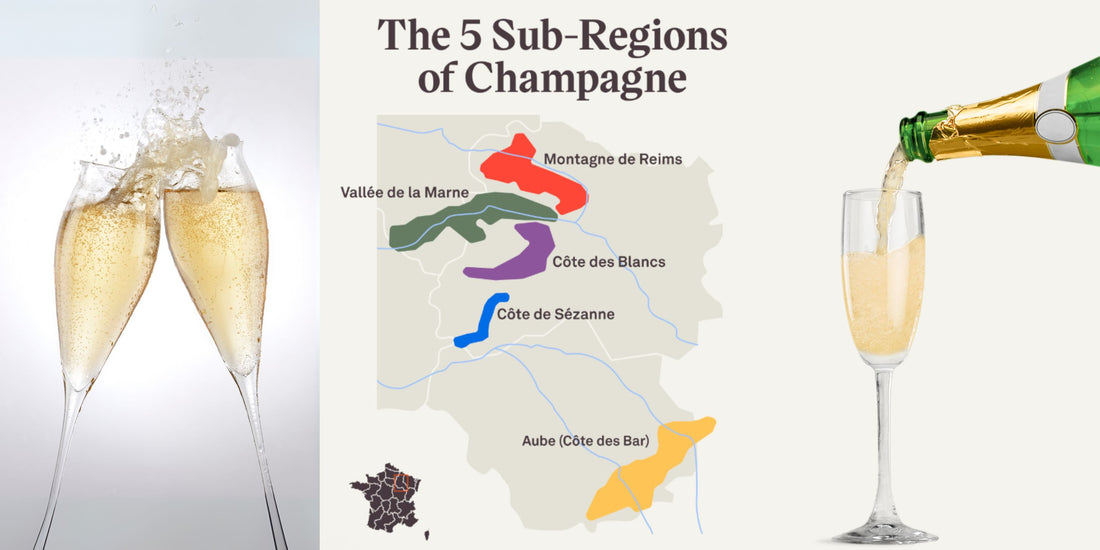When it comes to the world of sparkling wine, Champagne reigns supreme. It is renowned for its exquisite bubbles and elegant flavors. But did you know that Champagne is not just a single region, but a collection of sub-regions? In this article, we will delve into the fascinating world of Champagne and uncover the answer to the question: How Many Sub-Regions Are There in Champagne?
The All-Encompassing Champagne AOC
Within the Champagne AOC, we discover the existence of five distinct sub-regions. These sub-regions offer unique terroirs, contributing to the diversity and character of Champagne wines. Let’s delve into each sub-region:
1. Aube (Côte des Bar)
Situated in the southernmost part of Champagne, the Aube sub-region, also known as Cote des Bar, boasts rolling hills and gentle slopes. It is renowned for its Pinot Noir grapes, which thrive in the warm microclimate. The wines from this sub-region are often characterized by their rich fruitiness and structured elegance.
2. Montagne de Reims
Heading northwards, we encounter the Montagne de Reims sub-region. This area is famous for its chalky soils and cool climate, ideal for cultivating the noble Pinot Noir grape. The wines produced here tend to possess pronounced aromatics, strength, and depth.
3. Côte des Blancs
If you are a lover of Chardonnay, then the C?te des Blancs should be on your radar. This sub-region is home to vast stretches of vineyards, dominated by the Chardonnay grape variety. The soils, rich in chalk and limestone, impart remarkable minerality and finesse to the wines originating from this area.
4. Côte de Sézanne
Located southeast of the C?te des Blancs, the C?te de S?zanne is a relatively smaller sub-region that often flies under the radar. Nevertheless, it produces exceptional Chardonnay-based Champagnes with a delicate balance of fruitiness and freshness. The wines of this area possess a unique charm that captivates the discerning palates.
5. Vallée de la Marne
Finally, we arrive at the Vall?e de la Marne sub-region, known for its meandering river and diverse vineyards. Here, we witness a harmonious blend of Pinot Noir, Pinot Meunier, and Chardonnay grapes. The wines from this region are celebrated for their complexity, showcasing both richness and vibrancy.
The Prestige of the Champagne Label
It is important to note that under French law, wines labeled as “Champagne” must be produced within the Champagne region. Any sparkling wine produced elsewhere cannot bear the prestigious Champagne label. This legal protection ensures the integrity and authenticity of true Champagne.
Unlocking the Secrets of Champagne’s Sub-regions
Now that we have uncovered the five sub-regions of Champagne, we have a better understanding of the region’s diverse winemaking landscape. Each sub-region contributes its own unique touch to the wines, resulting in an array of flavors and styles. Exploring the sub-regions of Champagne allows us to delve deeper into the complex world of sparkling wine.
Credit to @Summerstirs.com
